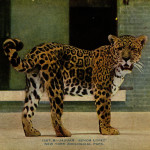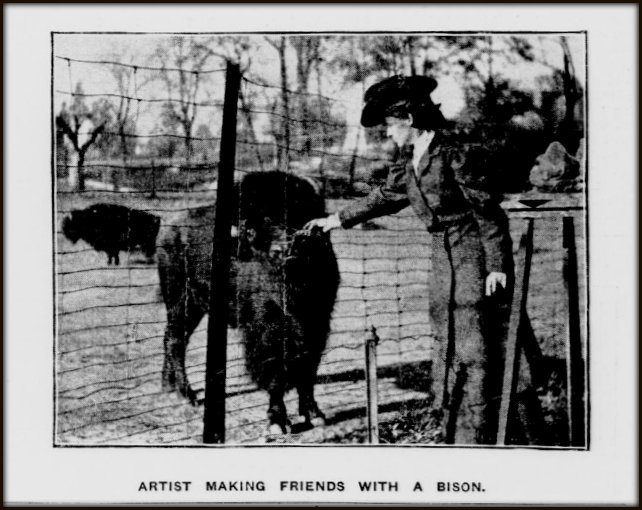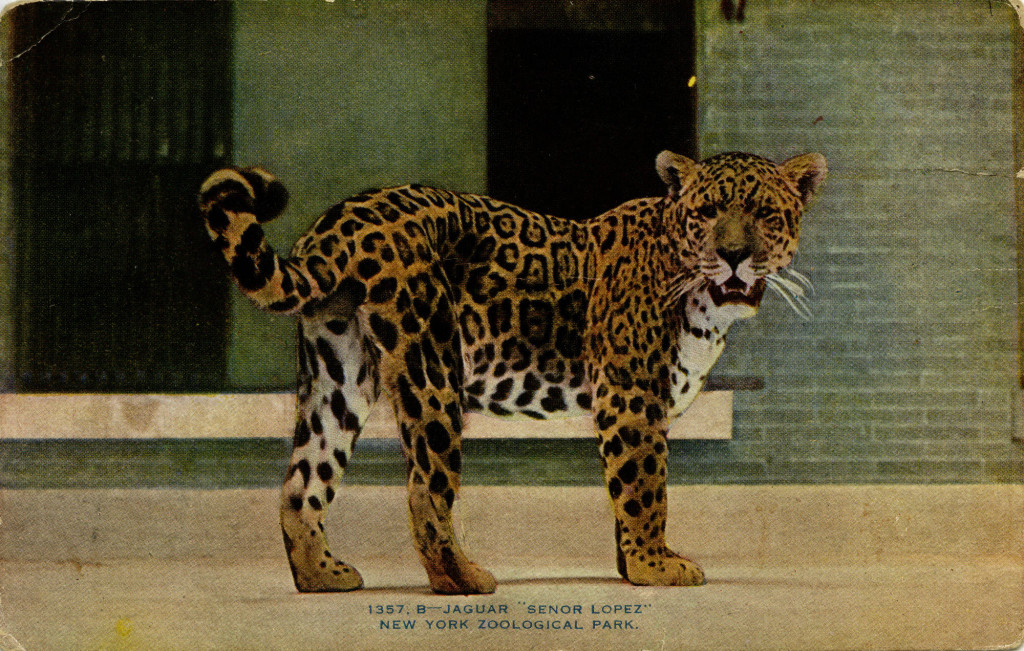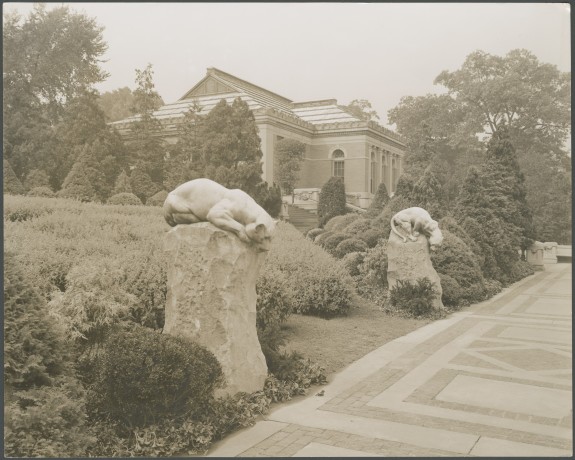 The famed sculptor Anna Hyatt Huntington (AHH) loved big cats. Beginning with her first cat sculptures in 1898, she created dozens of jaguars, leopards, lions, and tigers in all shapes and sizes. AHH’s father, the zoologist and paleontologist Alpheus Hyatt (1838-1902), who worked at the Boston Society of Natural History from 1870 until his death in 1902, undoubtedly nurtured her love of animals. During the 1890s, AHH began studying wild animals in earnest at Norumbega Park in Newton, Massachusetts, and Bostock’s Live Animal Show in Boston.
The famed sculptor Anna Hyatt Huntington (AHH) loved big cats. Beginning with her first cat sculptures in 1898, she created dozens of jaguars, leopards, lions, and tigers in all shapes and sizes. AHH’s father, the zoologist and paleontologist Alpheus Hyatt (1838-1902), who worked at the Boston Society of Natural History from 1870 until his death in 1902, undoubtedly nurtured her love of animals. During the 1890s, AHH began studying wild animals in earnest at Norumbega Park in Newton, Massachusetts, and Bostock’s Live Animal Show in Boston.
In 1902, after settling in New York, AHH headed to the Bronx Zoo. There she modeled bison, monkeys, tigers, and lions. She insisted throughout her career on modeling animal subjects from life, rather than studying them in an academic setting. AHH made rough sketches and miniature clay models while observing the animals first-hand. She worked small lumps of plasterline on modeling tablets, transforming clay masses into sketches of wild beasts.
One ferocious animal, in particular, captured AHH’s attention: the celebrity Paraguayan jaguar Señor Lopez, who served as a source of inspiration for nearly four decades. A 1921 article in The Sun relates the “unusual story” of AHH’s modeling of Señor Lopez for Reaching Jaguar.
“This animal, a magnificent specimen owned by the Bronx Zoo, was so ferocious that even his keepers were unable to make friends with him. So violent was his temper that he killed a beautiful mate the instant she was admitted to his cage. It was the animal’s habit once or twice each day to climb upon a shelf-like ledge of rock within his enclosure, then, turning slowly, to begin the descent. Every day for two months Miss Hyatt sat before his cage, waiting with infinite patience for this moment when working rapidly she would model some muscle or portion of his lithe body in clay. As the days passed the animal began to show signs of wishing to make friends with this gentle voiced woman. Finally, to the chagrin and admiration of the keepers, at the end of two months the jaguar would lie close to the bars to be scratched, muttering friendly jungle talk the while.”
As AHH’s drawings reveal, she often studied Señor Lopez, eyeing the curve of his backbone, arched body, sinuous form, and intensity of facial expression. Such close and repeated inspection allowed her to convey the animal’s ferocity and feral athleticism.
After forging her own “American” identity as an artist, AHH spent several years working in Europe. In Auvers-sur-Oise outside Paris she occupied the studio of Charles-François Daubigny, a 19th-century landscape painter associated with the Barbizon school. Here, she worked on monumentalizing her small models created at the Bronx Zoo, including Jaguar and Reaching Jaguar, the first two life-size pieces that AHH created. [View video of AHH sculpting the jaguars.]
In 1926, AHH’s husband, Archer M. Huntington, whom she had married in 1923, ordered a bronze cast of the feline pair to be donated to the Metropolitan Museum of Art. In 1937, Huntington presented a stone pair to the Zoo. Since that time, they have stood on the slope between Fountain Circle and Astor Court, south of the Zoo’s Fordham Road entrance.
AHH’s relationship with jaguars and other wild animals connected to the idea of the vanishing West. As the frontier closed, defining qualities of American culture had to be reformulated—brought east and reintegrated into rapidly expanding urban metropolis. Untamed nature arrived in eastern cities in the form of zoological parks and natural history museums, where man’s relationship with beasts began to change. Wild animals, displayed to thousands of curious viewers, spoke to man’s taming of nature within the framework of American identity.
This post was written by Daria Rose Foner, doctoral student in art history at Columbia University. She graduated from Princeton University and has an M.Phil from Cambridge University. Before attending college she danced with the Norwegian National Ballet. She was one of the curators of the exhibition Goddess, Heroine, Beast: Anna Hyatt Huntington’s New York Sculpture, 1902-1936, at the Wallach Gallery, Columbia University from January 22 to March 15, 2014.
Read more about the exhibition and find additional images of the jaguars at ARTnews. See a video about the exhibition here.




Another bronze cast pair is at the National Museum of Wildlife Art, Jackson, WY